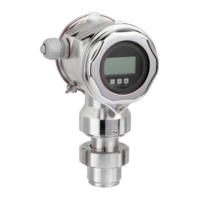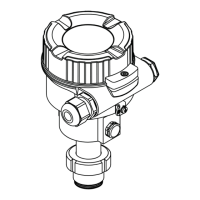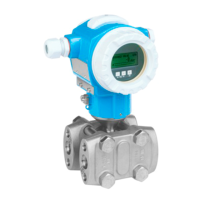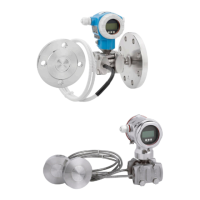Deltapilot S FMB70 Proof testing
Endress+Hauser 29
6 Proof testing
The safety-related functionality of the device in the SIL mode must be verified during
commissioning, when changes are made to safety-related parameters, and also at
appropriate time intervals. This enables this functionality to be verified within the
entire safety instrumented system. The time intervals must be specified by the
operator.
L
CAUTION
The safety function is not guaranteed during a proof test.
Suitable measures must be taken to guarantee process safety during the test.
‣
The safety-related output signal 4 to 20 mA must not be used for the protective system
during the test.
‣
The operator specifies the testing interval and this must be taken into account when
determining the probability of failure PFDavg of the sensor system.
The individual proof test coverages (PTC) that can be used for calculation are specified for
the proof tests described below.
Two possible ways to perform proof tests to detect dangerous undetected failures are
described below. They differ with regard to the percentage coverage rate.
6.1 Test sequence A
Proof testing procedure
1. Bypass safety PLC or take other suitable measures to prevent alarms from being
triggered in error.
2. Disable locking
3. Set the current output of the transmitter to HI alarm via a HART command or via the
local display and check whether the analog current signal reaches this value (e.g.
simulate an alarm via the "SIMULATION MODE" and SIM. ERROR NO. parameters).
This test detects problems due to non-standard voltages (e.g. due to a loop current
supply voltage that is too low or due to increased line resistance) and checks for
possible failures in the transmitter electronics.
4. Set the current output of the transmitter to LO alarm via a HART command or via the
local display and check whether the analog current signal reaches this value (e.g. set
the ALARM RESPONSE parameter to "Min. alarm" or simulate an alarm via the
"SIMULATION MODE" and "SIM. ERROR NO. parameters). This test detects any faults
associated with quiescent currents.
5. Restore the full functionality of the current loops.
6. Remove the bypass for the safety PLC or restore normal operation by some other
means.
7. After the proof test has been carried out, the results must be documented and
retained in a suitable manner.
This check detects 50 % of the dangerous undetected failures.
6.2 Test sequence B
Proof testing procedure
1. Carry out steps 1 to 4 of test sequence A.

